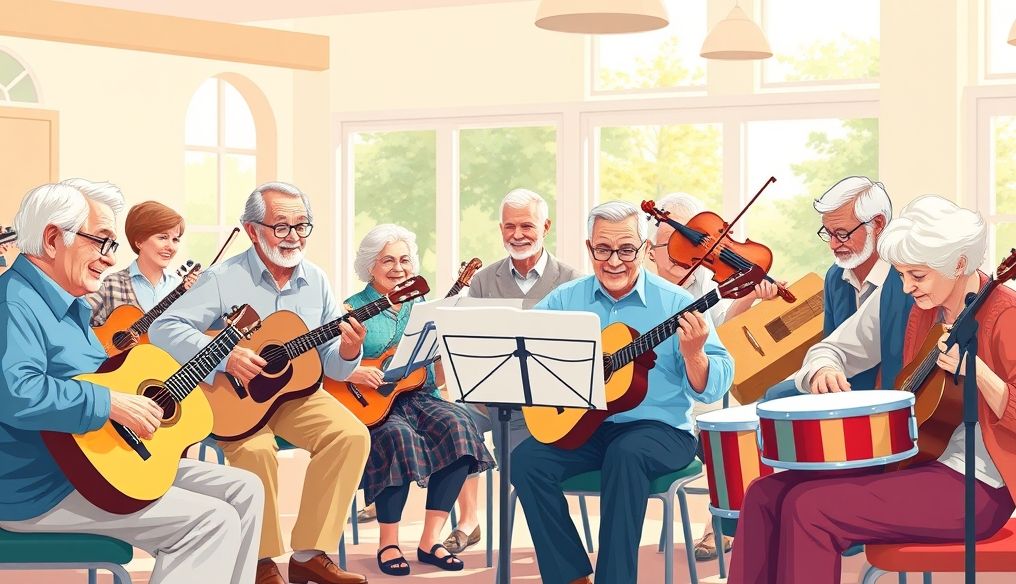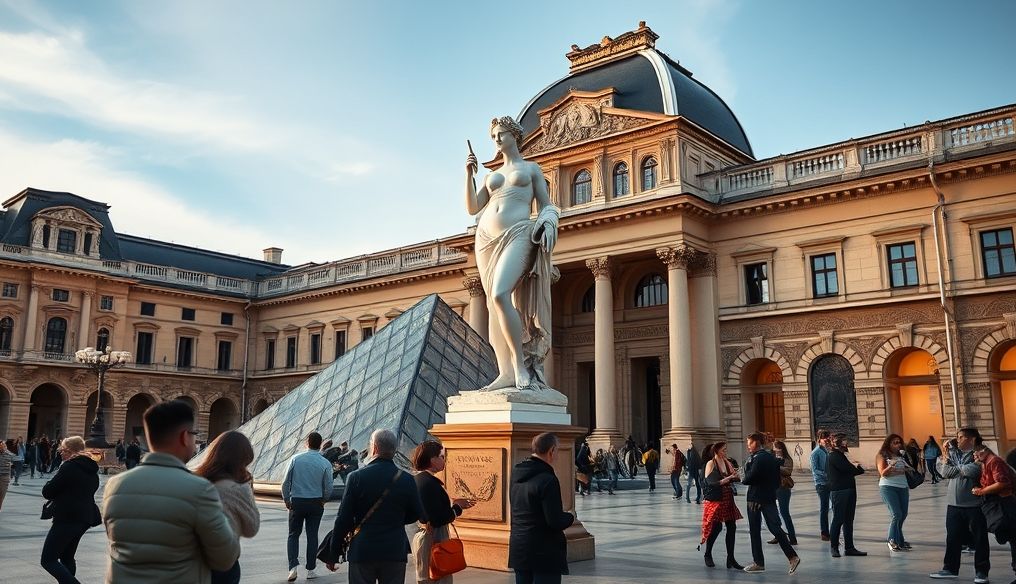Introduction to the World of Art: A Journey Through Art Movements
Art is not just paintings hanging on walls or sculptures in museums. It's an expression of the spirit of the age, a reflection of culture, and a window into the visions of artists. Throughout history, different art movements have emerged, each characterized by its unique style, distinctive techniques, and specific philosophy. Understanding these movements helps us appreciate art more deeply and consciously.
What is an Art Movement?
An art movement is a trend or style in art with a specific common philosophy or goal, followed by a group of artists during a restricted period of time (usually a few months, years or decades) or, at least, with the heyday of the movement defined within a number of years. Art movements were especially important during modern art, when each consecutive new movement was considered as an avant-garde advance.
Why Should We Care About Art Movements?
- Deeper Understanding: Knowing the art movement to which a work of art belongs helps us understand its historical and cultural context.
- Greater Appreciation: Understanding the techniques and styles used in a particular movement increases our appreciation for the artist's skill and creativity.
- Broadening Horizons: Getting acquainted with different art movements broadens our horizons and makes us more open to diverse forms of artistic expression.
- Developing Artistic Taste: By studying art movements, we can develop our own artistic taste and identify the types of art we prefer.
How to Differentiate Between Different Art Movements?
Differentiating between different art movements requires careful study of several elements:
1. Style and Techniques
Style is the way an artist expresses themselves through their artwork. Techniques are the tools and methods the artist uses to create their work. Some common styles and techniques include:
- Line: Line thickness, type (straight, curved, dashed), and how it is used to define shapes and create depth.
- Color: The use of colors, including primary and secondary colors, color tones, and how they are used to create contrast and harmony.
- Shape: The shapes used in the artwork, whether geometric or organic, and how they are arranged to create balance and focus.
- Light and Shadow: How light and shadow are used to create depth, volume, and realism.
- Composition: How the different elements in the artwork are arranged to create a balanced and aesthetically pleasing composition.
2. Subject Matter
The subject matter is what the artwork represents. The subject matter can be a portrait, a landscape, a historical scene, or an abstract idea. The common themes in a particular art movement often reflect the interests and values of that time period.
3. Historical and Cultural Context
The historical and cultural context is the social, political, and economic conditions in which the artwork originated. Understanding these conditions helps us understand the message the artist was trying to convey and why they chose to represent the subject in the way they did.
4. Philosophy
Philosophy is the set of beliefs and values that guide an artist's work. The philosophy of an art movement often reflects the artists' view of the world and the place of humans in it. For example, the Romantic movement focuses on emotion and imagination, while the Realist movement focuses on representing the world accurately and objectively.
Examples of Famous Art Movements
1. Impressionism
Period: Late 19th Century.
Characteristics:
- Focus on capturing the fleeting visual impressions of light and color.
- Use of short, quick brushstrokes.
- Painting outdoors (plein air).
- Common Themes: Landscapes, daily life, portraits.
Examples: Paintings by Claude Monet, Edgar Degas, Pierre-Auguste Renoir.
Illustrative Example: Claude Monet's "Impression, Sunrise" embodies the philosophy of Impressionism in capturing the fleeting moment through light and colors.
2. Surrealism
Period: Early 20th Century.
Characteristics:
- Exploration of the unconscious and dreams.
- Use of strange and illogical images.
- Focus on spontaneity and creative freedom.
- Common Themes: Dreams, imagination, symbols.
Examples: Paintings by Salvador Dalí, René Magritte, Joan Miró.
Illustrative Example: Salvador Dalí's "The Persistence of Memory" depicts melting clocks in a desert landscape, reflecting Surrealism's interest in the unconscious and distortion of reality.
3. Expressionism
Period: Early 20th Century.
Characteristics:
- Expression of the artist's inner feelings and emotions.
- Use of strong and distorted colors.
- Focus on subjectivity and intuition.
- Common Themes: Anxiety, loneliness, pain.
Examples: Paintings by Edvard Munch, Ernst Ludwig Kirchner, Emil Nolde.
Illustrative Example: Edvard Munch's "The Scream" expresses a state of anxiety and despair through the use of distorted colors and twisted lines.
4. Cubism
Period: Early 20th Century.
Characteristics:
- Analysis of shapes into geometric elements.
- Representation of objects from multiple angles simultaneously.
- Ignoring traditional perspective.
- Common Themes: Portraits, still life, landscapes.
Examples: Paintings by Pablo Picasso, Georges Braque, Juan Gris.
Illustrative Example: Pablo Picasso's "Guernica" represents the bombing of the city of Guernica during the Spanish Civil War through the use of distorted geometric shapes and dark colors.
5. Realism
Period: Mid-19th Century.
Characteristics:
- Representation of reality accurately and objectively.
- Focus on the daily life of ordinary people.
- Avoiding idealism and romanticism.
- Common Themes: Work, poverty, rural life.
Examples: Paintings by Gustave Courbet, Jean-François Millet, Honoré Daumier.
Illustrative Example: Jean-François Millet's "The Gleaners" depicts three women collecting the remaining ears of grain in the field after harvest, reflecting Realism's interest in portraying the lives of peasants.
6. Pop Art
Period: Mid-20th Century.
Characteristics:
- Use of images from popular culture and advertising.
- Focus on consumerism and commerce.
- Use of bright colors and printing techniques.
- Common Themes: Consumer products, celebrities, comics.
Examples: Paintings by Andy Warhol, Roy Lichtenstein, Claes Oldenburg.
Illustrative Example: Andy Warhol's series of Campbell's Soup Cans embodies Pop Art's interest in consumer culture and transforming everyday products into works of art.
7. Abstract Art
Period: Early 20th Century.
Characteristics:
- Not representing reality directly.
- Focus on colors, shapes, lines, and textures.
- Expressing abstract feelings and ideas.
- Common Themes: Undefined, depends on the viewer's interpretation.
Examples: Paintings by Wassily Kandinsky, Piet Mondrian, Jackson Pollock.
Illustrative Example: Jackson Pollock's drip paintings express creative freedom and the expression of feelings through abstract colors and shapes.
8. Rococo
Period: 18th Century.
Characteristics:
- Excessive ornamentation and intricate details.
- Light and pastel colors.
- Themes: Love, merriment, aristocracy.
Examples: Paintings by Jean-Honoré Fragonard, François Boucher.
Tips for Developing Your Artistic Eye
- Visit Museums and Art Galleries Regularly: Exposing yourself to diverse works of art helps you develop your artistic taste and understand different art movements.
- Read Books and Articles About Art History: Learning more about art history and different art movements gives you a deeper context for understanding artworks.
- Participate in Art Workshops and Training Courses: Learning different artistic techniques and styles helps you appreciate the skill of artists.
- Practice Drawing and Painting: Practicing art yourself helps you understand the challenges artists face.
- Discuss with Others: Exchanging opinions and ideas with others about artworks helps you broaden your horizons and develop your understanding.
Conclusion
Differentiating between art movements is an ongoing journey of learning and exploration. By studying the different styles, techniques, subject matters, historical and cultural contexts, and philosophies, we can develop a deeper understanding and greater appreciation of art. Remember that art is a universal language, and each art movement is a unique dialect. Enjoy the journey!




